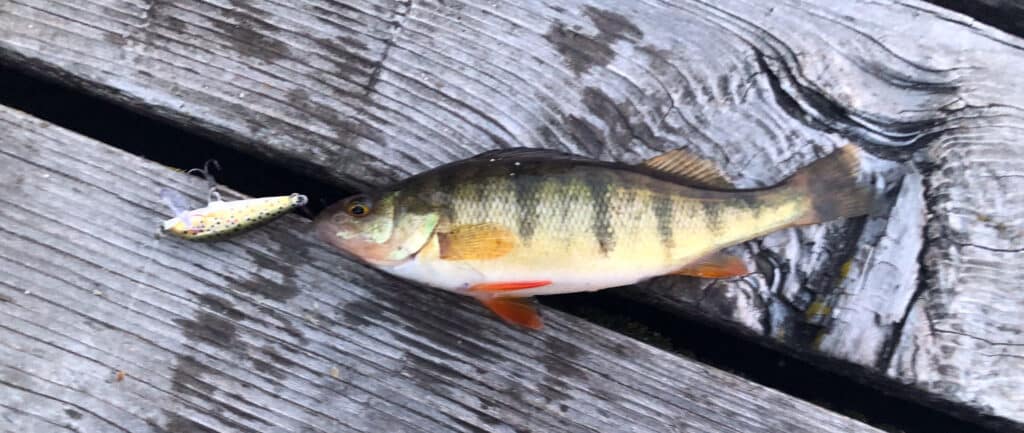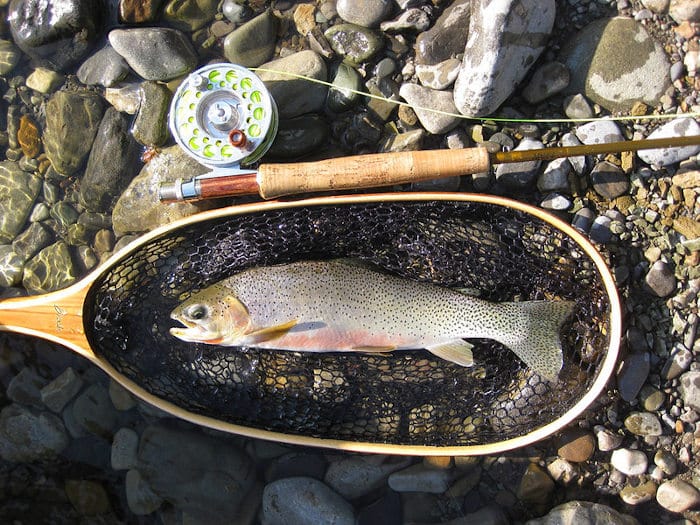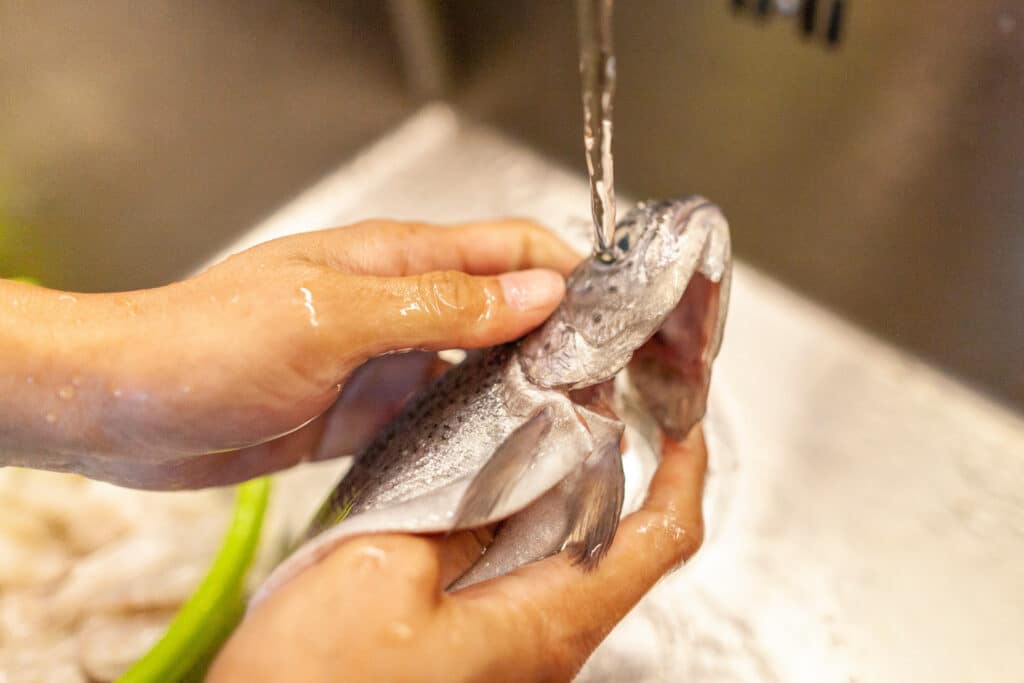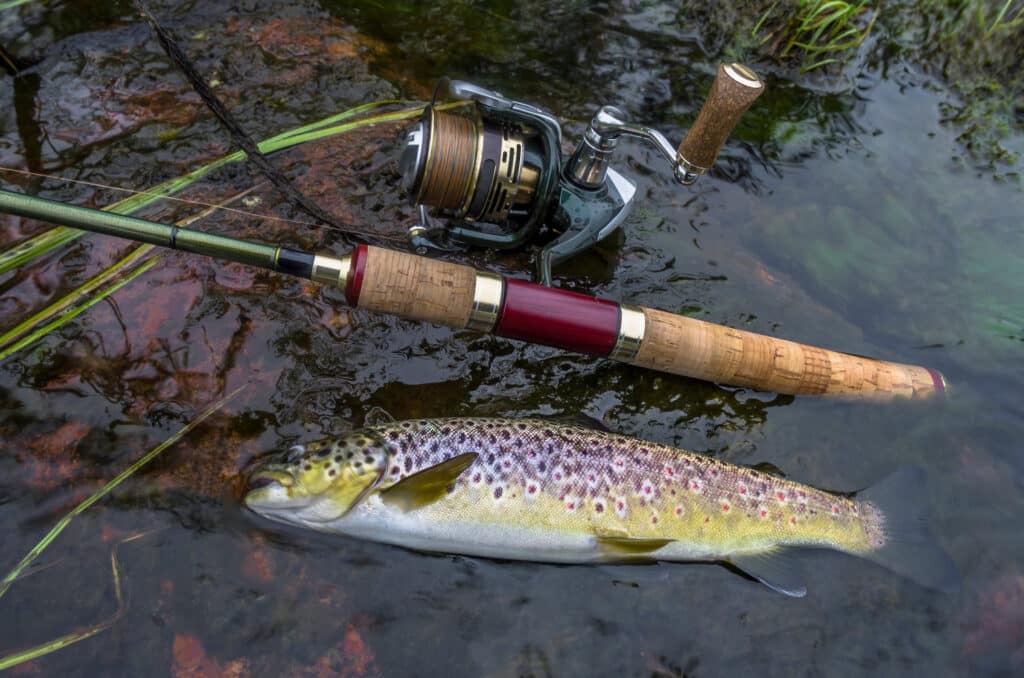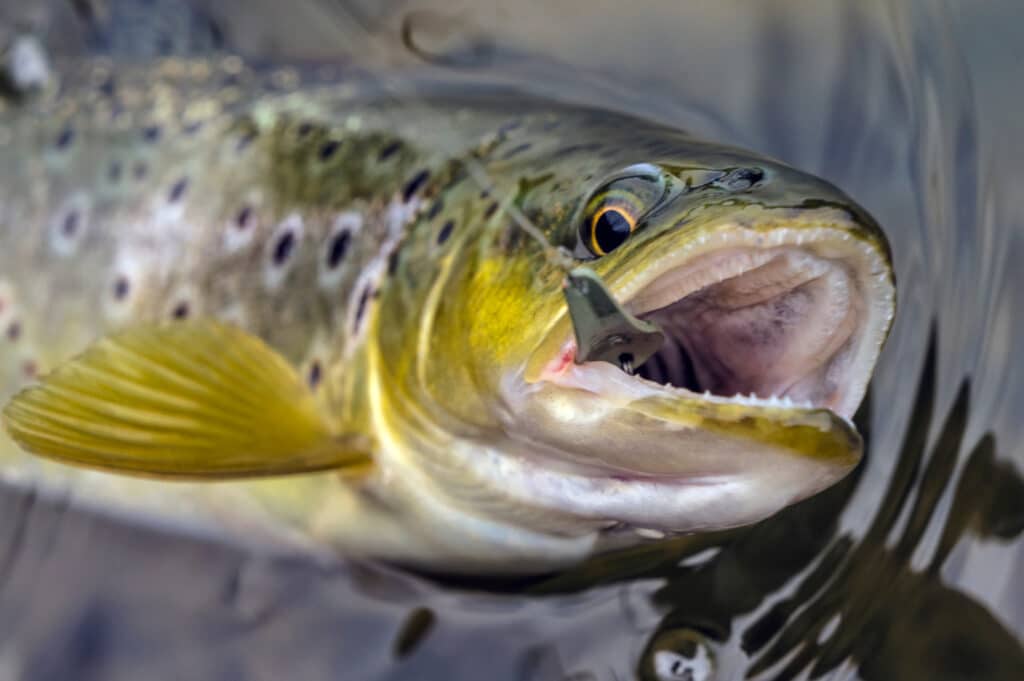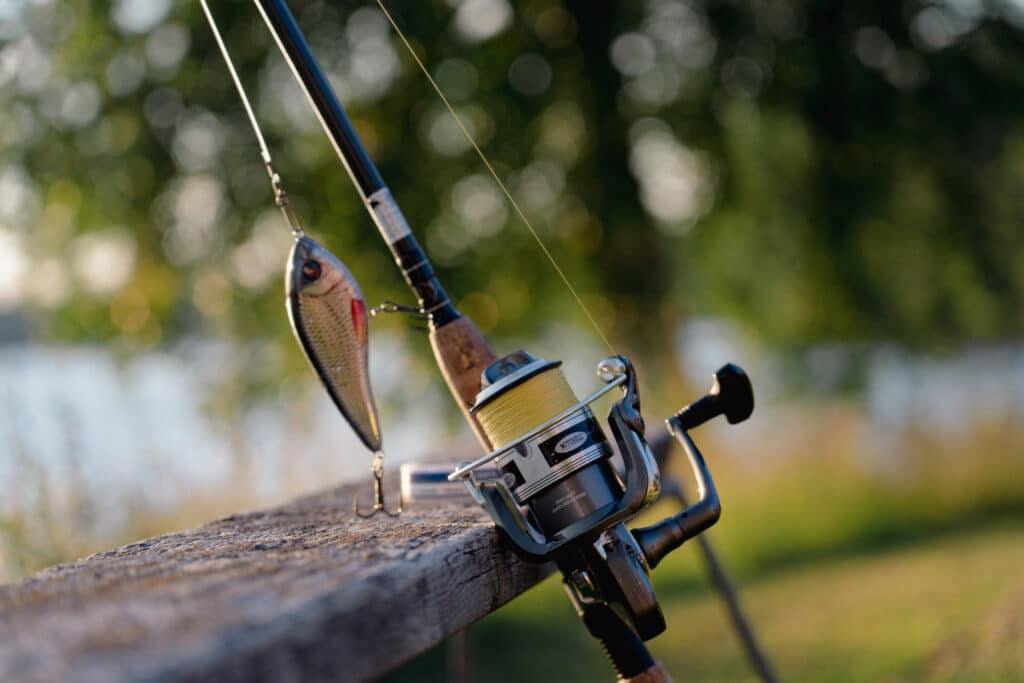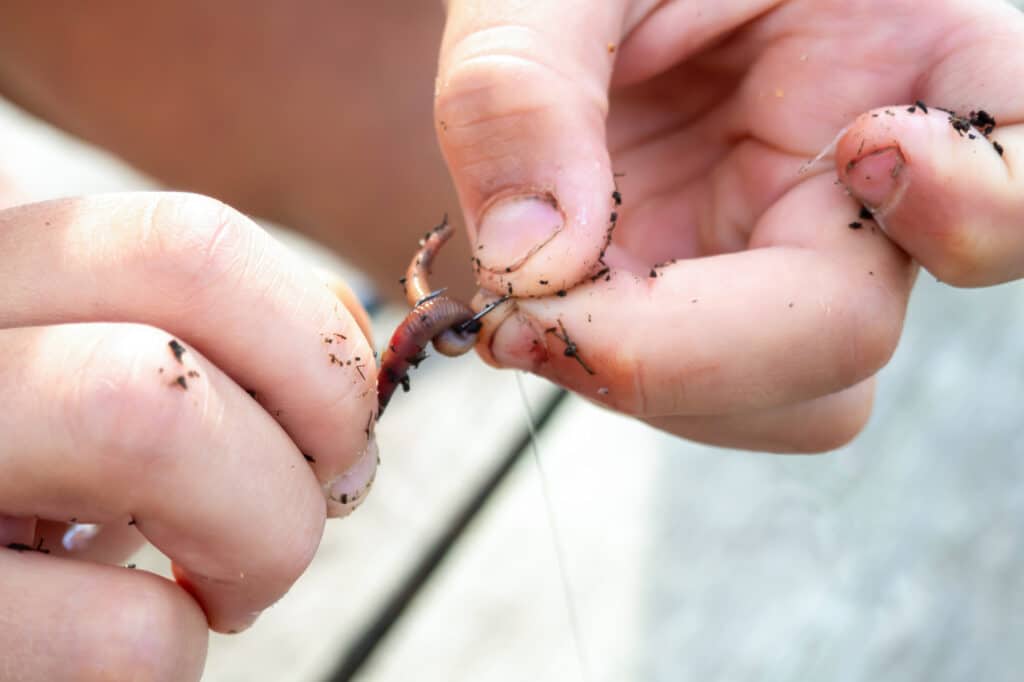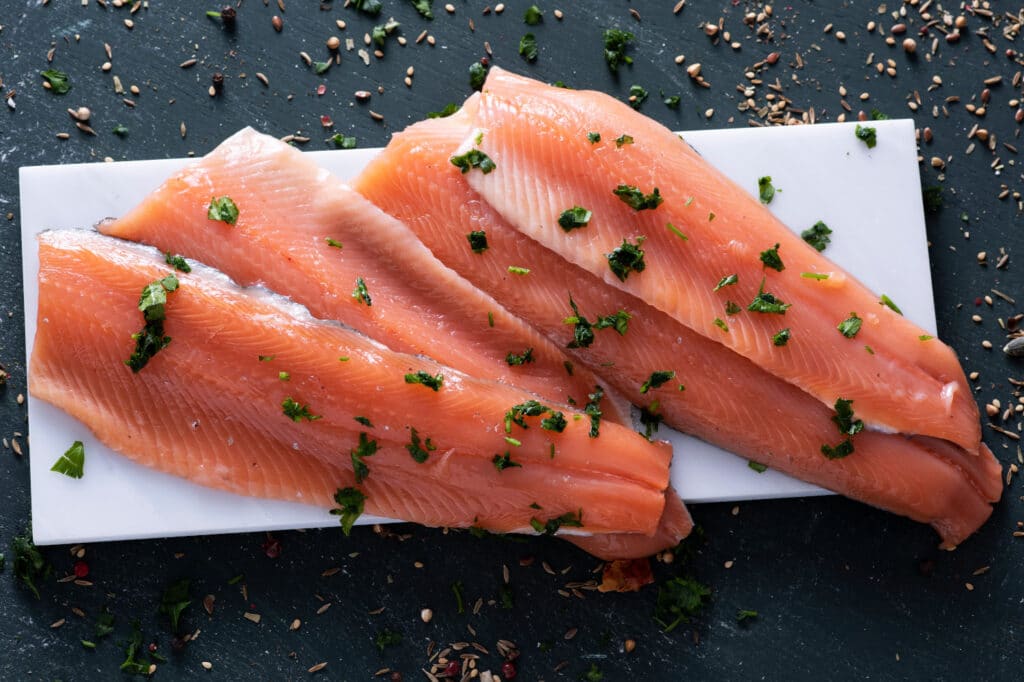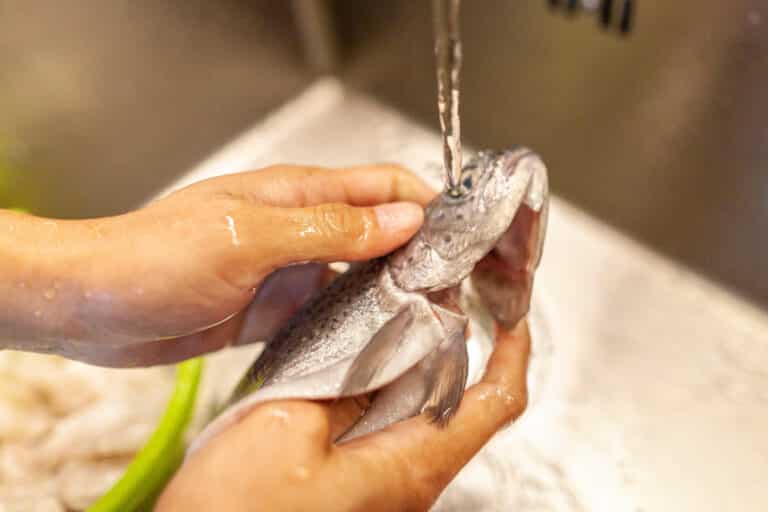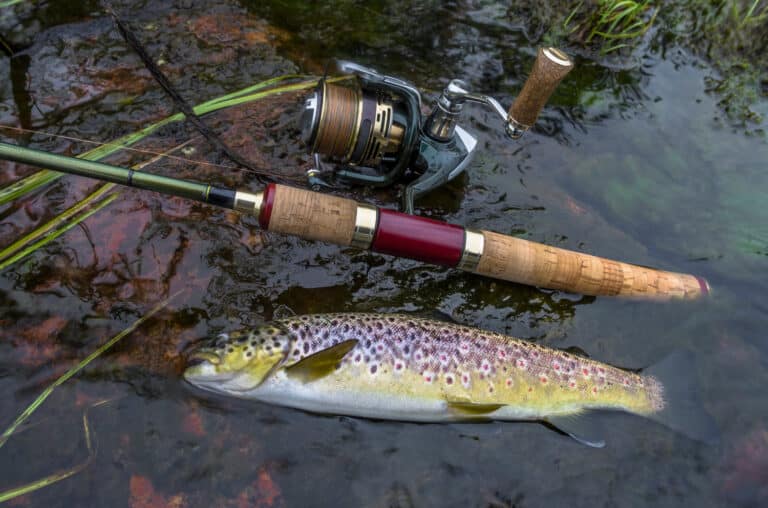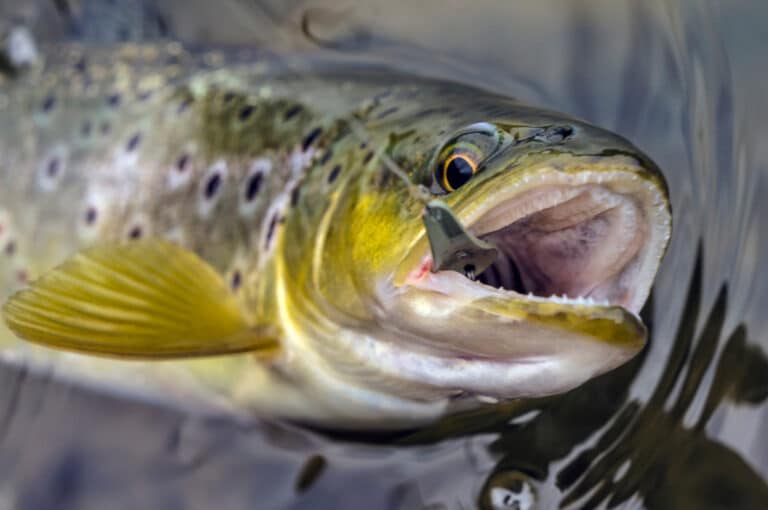If you know anything about yellow perch fishing, you probably know that they aren’t exactly “trophy fish”. They’re small, unassuming little fish, but they’re some of the most popular gamefish in North America for good reason.
Yellow perch are found across the northern United States, fight hard for their size, and will bite just about anything. That, combined with the fact that they school up by the hundreds, means that catching a cooler full of them isn’t out of reach. They’re a great fish for beginners or seasoned anglers, and you can catch them with minimal gear and tackle.
And you should try, because they’re arguably the best freshwater fish for the dinner table. They have a mild, almost sweet flavor, and a firm, flaky texture. They’re great for grilling and frying alike, and next time you go out on a food-fish mission, yellow perch should be at the top of the list.
In this article, I’ll go over the basics of how to catch these tasty fish. I’ll include things like required gear, the best baits and lures, and tips and tactics for filling the cooler.
The Wild Provides is a participant in the Amazon Affiliate program. If you click through one of the links on this site and make a purchase, we may receive a small commission at no extra cost to you. It helps to keep us up and running, but all recommendations are my own honest opinions.
A Bit About Yellow Perch
Yellow perch (species name Perca flavescens) are a common carnivorous freshwater fish. They inhabit lakes, streams, and ponds, and live on a fairly varied diet. This can include zooplankton, insects, crayfish, and even freshwater mussels.
These days, yellow perch are very widespread. In most of the places they can be found, however, they’ve been introduced; their native range only includes the midwest and the northeastern United States. They’ve been so successful because they can tolerate a huge variety of water conditions and are prolific spawners.
Perch fall into the “panfish” category; basically, just fish that are just small enough to fit in a frying pan. Along with other panfish such as crappie and bluegill, perch make amazing table fare and are some of the most common fish for fish frys.
There are many panfish species, but perch are very easy to identify. This is mostly because there’s almost nothing else that looks like them in the lakes where they live.
Yellow Perch Identification
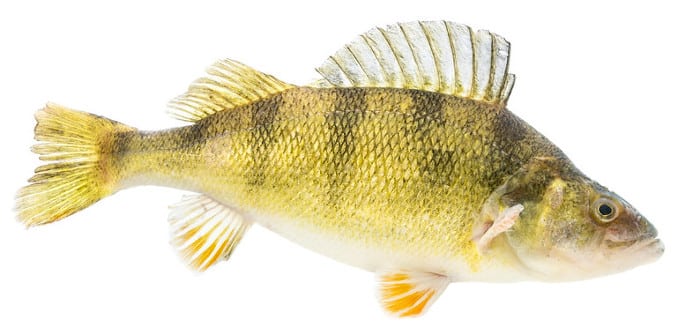
As is always the case when fishing, it’s important to know your target.
Yellow perch are yellowish-gold in color with six to nine dark vertical bars on their body (earning them the nickname “striped perch,” though that name also refers to a saltwater species). They also have two dorsal fins, and their foremost dorsal fin has very tall spines relative to its body.
Perch are small fish (6-12 inches long) and weigh less than a pound. In most states, the record catch is between 2 and 3 pounds, so they do get bigger, but not by much.
The only fish that perch look similar to are walleye and sauger (which are in the same family), but walleye and sauger are generally much longer and have a more mottled color pattern compared to the yellow perch’s distinctive black bars.
Yellow Perch Fishing Tackle
Perch are great beginner fish because you don’t need much to catch them. That said, here’s the basic tackle you’ll need to get going.
Fishing Rod
Just about any rod can be used for perch fishing. But you’ll have better luck if you choose one with these qualities:
- 6 foot to 7 1/2 foot spinning rod (longer is better for longer casts, but not necessary)
- Light-Ultralight action (2-8 pound rating)
- Graphite composition (not necessary, but graphite is much more sensitive than fiberglass)
There are tons of great rods that fall into this category. If you’re looking at getting a new one, you can’t go wrong with the Ugly Stik GX2 (buy on Amazon here). It’s a tough rod with plenty of sensitivity at a great price.
Reel
Any 1000 series or 2000 series spinning reel will work well for perch. You’ll be using very light line, so going much larger than a 2000 series can impede casting ability. If you plan on deep jigging (like over 100 feet deep), then a 3000 series reel would be a safer bet for more line capacity.
For a quality spinning reel at a great price, it’s hard to beat the Okuma Ceymar or Pfleuger President. Both are around 50 bucks on Amazon, and they’re super smooth and durable for the price.
Line
4-6 pound test monofilament line is all you need for perch. They aren’t particularly line-shy, though, so if you happen to have heavier line already spooled up it should work just fine.
Hooks, Jigheads, And Sinkers
Perch can be caught with a variety of different rigs, so you don’t need everything at one time. That said, it is nice to have a variety of options on hand to switch up your presentation if the fish aren’t biting.
For hooks, a size 4-8 baitholder hook works well. Perch have big mouths for their size, and larger hooks are generally less likely to be swallowed, so I lean on the larger side.
Perch fishing with jigs can also be very productive. 1/32 oz, 1/16 oz, and 1/8 oz round jigheads can all work, but I usually use 1/16 oz. As for colors, perch aren’t picky. I regularly use pink or chartreuse, but unpainted jigheads often work just as well. It’s not a bad idea to have a few color options so you can change up for water conditions.
If using sinkers (such as with a bobber), split-shot is all you need. Just use a large enough weight to keep your bait down and you’ll be good to go. A good variety pack will have a few different sizes so you can adjust as necessary.
Where To Find Yellow Perch
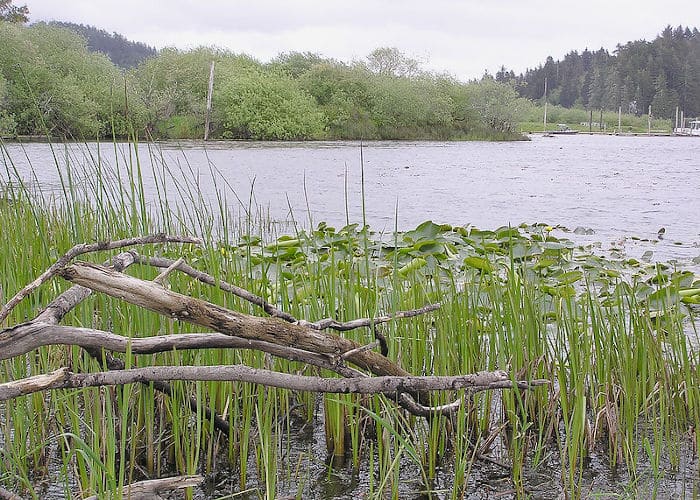
Getting a perch to bite is pretty easy. But the key to catching perch is finding them; if you aren’t right where the fish are, you aren’t going to catch any.
Perch can live in a huge variety of water conditions and inhabit lakes, ponds, and streams. That said, they are most commonly found in large, relatively clear lakes with sandy or gravel bottoms. They prefer cool water, too, with 60-70 degree summer temperatures being ideal.
Yellow perch are a schooling species, and usually school up with fish of similar size. When you find a school, the bite will often be red-hot. They can be caught year-round, but where you’ll find perch depends on the time of year, so it’s important to understand their seasonal behavior.
Where To Catch Perch In The Winter
Because of their schooling behavior and relatively easy bite, perch are hugely popular among ice anglers. During the winter, they can be just about anywhere, but large fish and large schools of perch usually prefer deeper water.
Concentrate on areas with any kind of structure. That could be downed trees, rip-rap rocky bottoms, or even just a drop-off where water depth changes quickly (like at my best local spot). Perch feed just off the bottom, so that’s where your bait or lure should be as well. If you have ice electronics, that’s great; if not, keep moving until you find them (a powered gas or electric auger helps a lot here).
Where To Catch Perch In The Spring
Springtime is spawning time for perch. Starting when the water hits about 45 degrees, they’ll move out of their deep wintertime haunts into shallow water. They love shallow marshes, sloughs, and bays, so if you have these in your area, try them first. If not, fish the shallowest areas you can find; perch regularly spawn in 3-5 feet of water.
When fishing the shallows, concentrate on structure. This can be downed trees, docks, or even rocky outcrops, but the best spring perch habitat is weed beds. Fish the top of short grass or the edges of taller weeds like bulrushes and cattails, and you’ll probably find perch.
Where To Catch Perch In The Summer
Throughout spring and into summer, perch move into deeper water as the water temperature increases. You’ll continue to find them in fairly shallow water (5-10 feet deep) up until the water hits about 70 degrees, but beyond that, they can be anywhere.
Perch fishing in the summer is therefore much easier if you have a fish finder. You should be able to locate schools, and once you do it’s a matter of getting your bait in front of them. Keep your boat directly above the school (using a drift sock or anchor as necessary), and drop down to their depth and jig vertically.
Schools are constantly on the move, so any deeper part of the lake can hold fish on a given day. When it comes to perch, keep moving until you find them, then stay on them from there.
How To Catch Yellow Perch
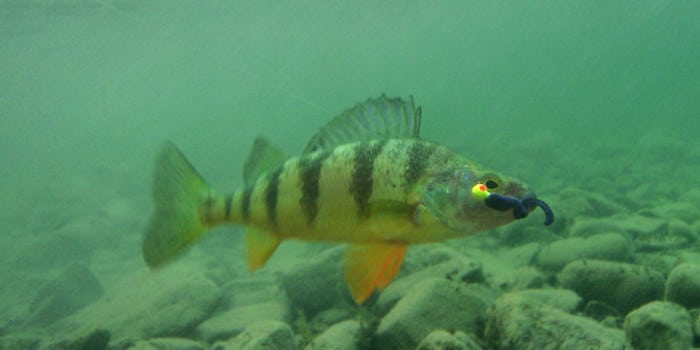
Perch fishing is great because you can often use whatever rig is the most fun for you. You can catch them on a huge variety of lures, including crankbaits (like Rapala’s), spinners and spoons, and jigheads with soft plastic lures. They’re all very simple to rig; just tie on whatever lure or bait you’re using and you’re good to go.
All that said, the most reliable way to catch perch is with live bait.
Perch Fishing With Bait
Perch will eat just about anything, but some of the best baits for perch include:
- worms/nightcrawlers
- maggots (for ice fishing especially)
- Perch eyeballs
You can also use artificial baits, like:
- Berkley Honeyworms
- Berkley Gulp Minnows
Any of these will work as perch bait. In areas where allowed (check your local fishing regulations first), many anglers swear by perch eyeballs. Once you start catching them, you should have an abundant supply, so it’s worth trying out to see if it works for you.
When fishing the tops of weed beds, a simple bobber rig works best. Tie a #4 baitholder hook and suspend below a bobber so your bait is just above the weed line. Use a split shot 6-12 inches from the hook, and use just enough weight to keep your bait down, because the more action the bait has in the water, the better. Then rig the hook with a worm or your preferred bait, and cast out so your bait is above the weeds. Try different spots and leader lengths as necessary.
You can also fish weed beds very effectively with a drop shot rig (more on that rig here). It’ll keep your lure just above the top of the weed beds, but you can give it as much jigging action as you want to.
If you’re fishing deep water, use jigheads to get to the bottom. Use whatever size jighead is necessary to ensure your rig stays directly below you, and tip it with a worm or other bait. Then slowly jig vertically until you catch fish.
Alternatively (if you don’t have a fish finder), you can cast your jigheads as far as you can and then slowly bounce them along the bottom back towards you. Doing this in a circle around the boat can help you find the fish faster.
Perch Fishing With Lures
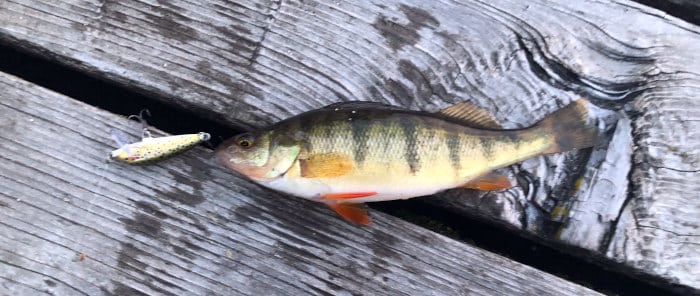
When it comes perch fishing with lures, you can use just about anything. But what you choose does depend on where you’re fishing. Some of my favorite perch lures are:
- Rapala Shad Rap Crankbait
- Rooster Tail Spinner
- Miniature Spoons
- Rapala Jigging Rap
- Eagle Claw Marabou Jig
When fishing the shallows, small crankbaits or spinners work well. Cast and retrieve these over the tops of weed beds or along weed lines for the best fishing. You can also cast near docks or other large structure, but be careful not to get too close and snag up.
It’s important to note that perch are considered poor swimmers and accelerate very slowly compared to other fish. When retrieving your lures, keep this in mind and stick to slower speeds for the best results.
When fishing deep water, vertically jigging small soft plastics on jigheads, jigging spoons, or other jigging lures is the way to go. One lure loved by perch anglers is the Rapala Jigging Rap, which looks like a fish and moves erratically as it rises or falls. You pretty much can’t go wrong with this lure as long as you jig it vertically, but any jigging spoon or small soft plastic can work just as well.
Perch Fishing Tips: How To Fill The Cooler
All of the above will help you catch more perch, but keep these tips in mind for greater success and a freezer full of fish.
1. Use Live Bait
Perch will take anything, but using live bait always increases your chances of success. Even if you’re fishing a lure, tipping it with a maggot or a piece of worm helps immensely. That little bit of scent will make your whole presentation that much more enticing, and the perch won’t be able to resist it.
2. Use Multiple Hooks
When jigging vertically, your goal is to be in the “perch zone”. The members of a school don’t all swim at exactly the same depth, though, so adding two or even three hooks further up your line means you’ll be in front of more fish at any given time.
Always make sure using multiple hooks is allowed in your area, but where allowed this tactic can be killer, and even result in catching two or more fish on a single drop.
3. Check Your Bait Often
Perch are notorious bait thieves. They don’t usually take and swallow like bass or trout; often they just nibble at the very tip. This leads to stolen baits, and a hook without bait just doesn’t catch fish.
Checking your baits often (and only using enough bait to cover the hook) ensures that you’re actively fishing as much as possible.
4. Fish At the Right Time
You can catch perch all day, but like many fish, they’re most active at dawn and dusk. Make sure that you’re on the water at these times for the hottest fishing and the best chance of success.
Final Thoughts
Overall, yellow perch are a fun and easy fish to catch. They’re great for kids because they fight hard for their size, and they’re amazing fried up for the dinner table. You just need to know where they like to be, put some bait in front of them, and you’re good to go. By using the tips in this article you should be well on your way to catching a mess of them, and hopefully having some fish tacos for dinner!

